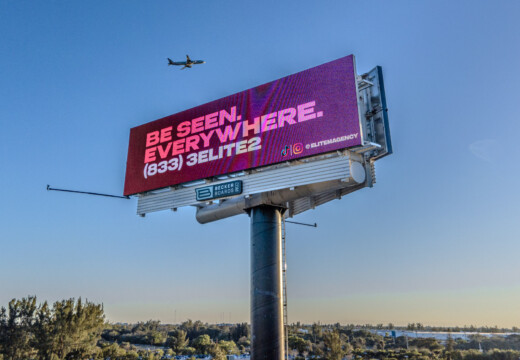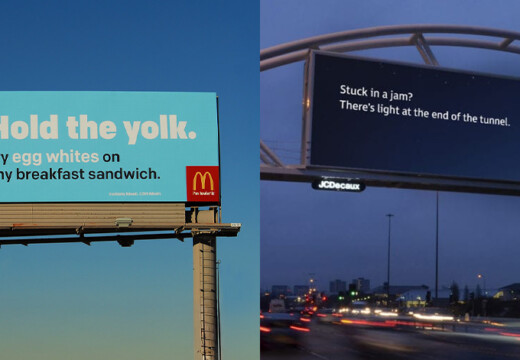Digital billboards come in three main sizes – small, medium, and large – and each serves a unique purpose based on location and viewing distance.
- Small (4’×8′ to 6’×12′): Best for urban areas with close viewers. Viewing range: 25–100 feet.
- Medium (10’×20′ to 10’×36′): Ideal for suburban roads or moderate-speed traffic. Viewing range: 100–500 feet.
- Large (14’×48′ to 20’×60′): Perfect for highways and long-distance visibility. Viewing range: 500–1,000 feet.
Key design tips:
- Use large, bold fonts (1-inch text height per 1 foot of viewing distance).
- Stick to 2–3 high-contrast colors for better readability.
- Keep messages short: 7–10 words for large billboards, 3–5 for small ones.
Understanding billboard size, resolution, and placement ensures your ad grabs attention and stays effective at any distance.
LED Screen Pixel Pitch Explained
Digital Billboard Size Standards
In the U.S., digital billboard standards are designed to ensure maximum visibility, no matter the environment.
Standard U.S. Billboard Sizes
Digital billboards generally fall into three main size categories:
| Size Category | Dimensions | Resolution | Optimal Viewing Distance |
|---|---|---|---|
| Large Format | 14′ × 48′ | 854 × 2928 px | 500–800 ft |
| Medium Format | 10′ × 36′ | 610 × 2196 px | 300–500 ft |
| Small Format | 6′ × 12′ | 768 × 144 px | 50–100 ft |
The 14′ × 48′ billboard is a popular choice for highways. Its expansive size ensures that drivers can clearly see messages from a distance, even at high speeds.
For more adaptable options, medium formats like 10′ × 36′ fit a variety of settings. Highways might use slightly larger versions, like 10′ × 40′, while suburban areas often prefer smaller ones, such as 10′ × 30′, to blend better with local surroundings.
Size Differences by Location
Billboard dimensions often depend on where they’re placed and the type of audience they’re targeting:
- Urban areas: Smaller displays, like 6′ × 12′ or 8′ × 24′, are ideal for engaging people at closer distances.
- Highways: Larger formats, such as 14′ × 48′ or 10′ × 40′, cater to fast-moving traffic and ensure visibility at greater distances.
- Suburban settings: Medium sizes, like 10′ × 30′, strike a balance between visibility and fitting into the local landscape.
These size variations help ensure that digital billboards are effective in different environments.
Screen Technical Details
Resolution and Pixel Density
Digital billboards rely on specific pixel matrices to ensure clear and sharp visuals, which are crucial for effective advertising. The resolution of a screen directly affects how crisp the text and graphics appear. For example, a standard 14′ × 48′ billboard typically uses a pixel matrix of 920 × 260, while a 12′ × 24′ display operates at 1,350 × 650 pixels. Most digital billboards maintain a resolution of 100 DPI (dots per inch), striking a good balance between image clarity and manageable file sizes. This ensures that both text and graphics are easy to read and visually appealing.
Here’s a quick reference table that pairs billboard sizes with their corresponding pixel specifications:
| Billboard Size | Pixel Matrix | DPI |
|---|---|---|
| 14′ × 48′ | 920 × 260 | 100 DPI |
| 12′ × 24′ | 1,350 × 650 | 100 DPI |
| 10′ × 10′ | 312 × 312 | 100 DPI |
| 12′ × 21′ (Vertical) | 264 × 480 | 100 DPI |
Understanding these technical details is essential when considering how aspect ratios and file formats influence the overall display performance.
Screen Ratios and File Specs
Digital billboards are designed with specific aspect ratios that correspond to their physical dimensions. These ratios help determine how content will appear on the screen. Common aspect ratios include:
- Landscape ratio (approximately 1:3.4) for 14′ × 48′ billboards.
- Wide format (1:2) for 12′ × 24′ billboards.
- Square format (1:1) for 10′ × 10′ billboards.
When submitting artwork for these screens, use JPG or PNG files in RGB mode. To ensure text is legible from a distance, it should be at least 12 inches tall, with a preference for sizes between 2 to 3 feet. Avoid including intricate details or QR codes, as these elements are often too small to be effective from standard viewing distances. Instead, focus on bold, high-contrast designs that can grab attention and remain impactful, even from far away.
sbb-itb-2e2e93f
Screen Size and Ad Performance
Viewing Distance Guidelines
The size of a billboard directly impacts its visibility range. Larger formats are ideal for long-distance viewing, while smaller screens are better suited for close-up audiences. Here’s a quick overview of recommended viewing distances:
| Billboard Size | Optimal Viewing Distance |
|---|---|
| 14′ × 48′ (Large) | 500–1,000 feet |
| 10′ × 30′ (Medium) | 300–600 feet |
| 8′ × 16′ (Small) | 150–300 feet |
These distances help ensure that viewers – whether drivers or pedestrians – have enough time to notice and process the advertisement.
Size-Based Design Rules
To make your ads stand out, design elements should align with the billboard’s size and recommended viewing distance. Here’s how to tailor your content for maximum clarity and impact:
For 14′ × 48′ Billboards (Large):
- Headlines should be 24–30 inches tall (around 400–500 pixels).
- Supporting text should be at least 18 inches tall (300 pixels).
- Keep the message concise with 7–10 words maximum.
For 10′ × 30′ Billboards (Medium):
- Headlines should be a minimum of 18 inches tall (300 pixels).
- Secondary text should measure at least 14 inches tall (230 pixels).
- Limit the content to 5–7 words.
For 8′ × 16′ Billboards (Small):
- Headlines should not be smaller than 14 inches tall (230 pixels).
- Stick to 3–5 words for quick readability.
Using bold fonts ensures better readability from a distance. When it comes to color, the contrast should match the billboard size:
- Large formats: Use 3–4 colors with moderate contrast.
- Medium formats: Stick to 2–3 colors with high contrast.
- Small formats: Also use 2–3 colors but prioritize high contrast for better visibility.
Finally, balance visuals and text based on billboard size. For large displays, dedicate 60–70% of the space to visuals, while smaller billboards should allocate 40–50%. Place key messages slightly toward the center-right, as this is where viewers’ attention naturally gravitates.
Picking the Best Screen Size
Screen Size Selection Criteria
When choosing the right billboard size, several factors come into play, all of which influence how effectively your ad reaches its audience. Consider the placement, traffic speed, and viewing distances to determine the most suitable dimensions for your campaign.
Traffic Speed
The speed of passing vehicles directly impacts how much time drivers have to view your ad, which in turn dictates the screen size you need:
- Highways: Larger billboards, like 14′×48′, work best for high-speed traffic.
- Suburban Roads: Medium-sized options, such as 10′×30′, are ideal for moderate-speed areas.
- Urban Streets: Smaller formats, like 6′×12′, are more effective in slower, closer-range environments.
Location Regulations
Keep in mind that local zoning laws might impose restrictions on billboard dimensions, especially in residential zones. Always review these regulations before finalizing your choice to avoid compliance issues.
Once you’ve selected an appropriate size, it’s time to consider how it impacts your budget and campaign outcomes.
Size and Cost Relationship
After narrowing down the right screen size, the next step is to evaluate how it fits into your overall advertising budget. Billboard costs vary significantly by size, but modern pricing models make it easier to manage costs effectively. Platforms like Blip offer flexible options that allow you to explore different sizes without overspending.
Cost-Effective Sizing Strategy
Blip’s pay-per-play model lets you test various screen sizes, starting at just $20 per day. Pricing factors such as dimensions, traffic volume, audience reach, and even peak hours can influence costs, giving you the flexibility to adjust your strategy as needed.
Performance Tracking
To ensure your investment yields results, track metrics like daily impressions, cost per thousand impressions (CPM), engagement rates, and overall return on investment (ROI). Blip’s analytics dashboard helps you compare performance across different screen sizes in real time. This data-driven approach enables you to refine your campaign and ensure your chosen size aligns with both your goals and budget.
Summary
Billboard dimensions, ranging from 6’×12′ to 14’×48′, determine both how visible they are and the specific technical requirements for their design. For digital billboards, RGB files at 100 dpi are standard, with pixel dimensions varying by size – for example, 312×312 for 10’×10′ screens and 920×260 for 14’×48′ displays.
Design Best Practices: Use font sizes of 2–3 feet for primary content and at least 12 inches for secondary text. These design and technical factors help guide the selection of the right billboard size based on location and traffic conditions.
Blip’s marketplace simplifies this process by allowing advertisers to choose billboard sizes that fit their campaign objectives. The platform provides design guidelines to ensure visuals meet visibility standards across formats, and it offers real-time analytics to monitor performance for each size.
The location and speed of passing traffic also play a key role in billboard selection. Smaller formats work well in urban areas with closer viewing distances, while highways are better suited for larger displays. By aligning billboard size, placement, and technical requirements, advertisers can create impactful outdoor campaigns that effectively reach their audience.
FAQs
How do I choose the right digital billboard size for my campaign based on location and audience?
Choosing the right digital billboard size depends heavily on the location of your ad and how far your audience will be from the screen. Larger billboards, like those measuring 14×48 feet, are perfect for highways or bustling urban areas. These settings require bigger displays to ensure your message stands out and remains readable from a greater distance. On the other hand, smaller billboards, such as 6×12 feet or 10×20 feet, are better suited for pedestrian zones or local streets where viewers are much closer, making the content easier to read and more attention-grabbing.
By considering your audience’s typical viewing distance and the surrounding environment, you can choose a billboard size that ensures your message is both clear and engaging.
What should I know about designing ads for different digital billboard sizes?
When designing ads for digital billboards, paying attention to the resolution and aspect ratio is key. These factors ensure your content appears sharp and fits the screen perfectly. Since billboard dimensions can vary, it’s important to create your designs with the specific size requirements in mind.
You’ll also want to consider pixel density and brightness levels to guarantee your ad remains clear and eye-catching, even on larger screens viewed from a distance. Stick to common file formats like JPEG, PNG, or MP4, and aim for smaller file sizes to allow for quicker loading and smooth playback. By aligning your design with these technical details, your ad will not only look polished but will also perform effectively on different billboard setups.
How does traffic speed affect the visibility of a digital billboard, and what size works best for highways?
Traffic speed significantly impacts the effectiveness of a digital billboard. On highways, where vehicles move at higher speeds, larger billboards work best. Their size makes them easier to spot from a distance, giving drivers enough time to notice and understand your message. In contrast, smaller billboards can be harder to read and may fail to grab attention in such fast-paced settings.
For high-speed areas, opting for larger billboard formats ensures better visibility and makes your ad stand out. This way, you can quickly capture attention and clearly communicate your message to drivers, even as they pass by at high speeds.


